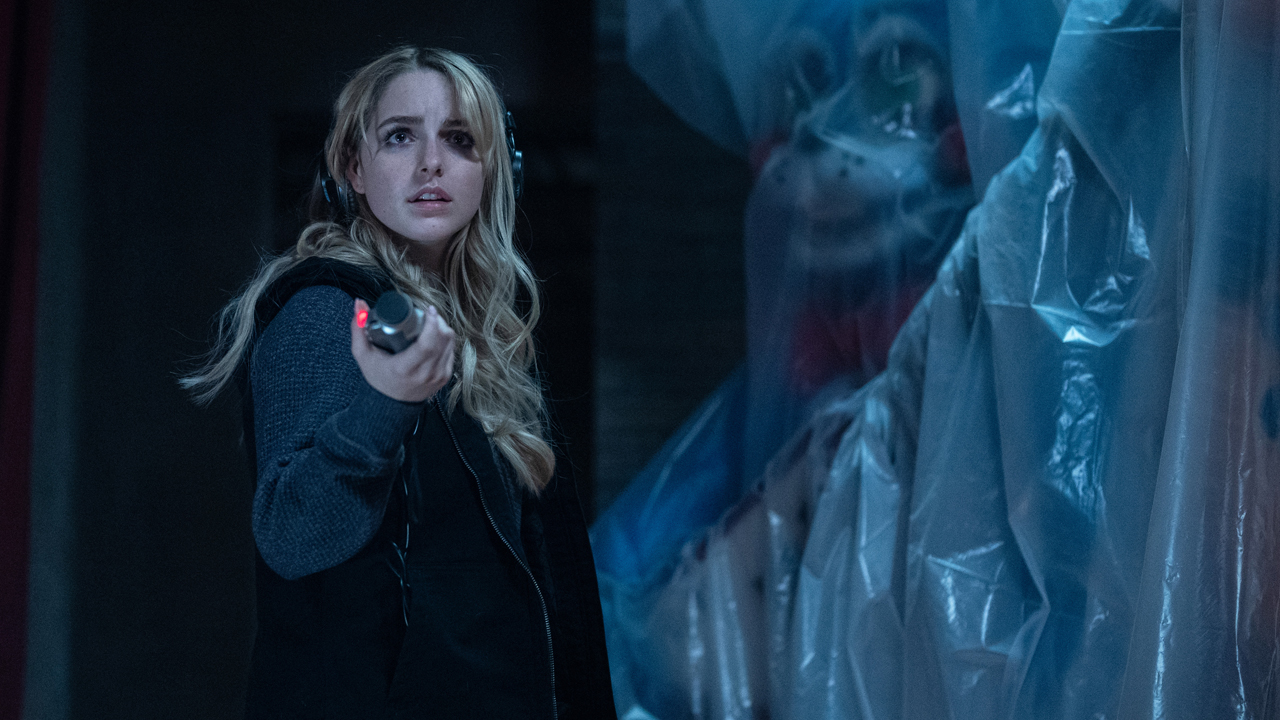The Real Reason Certain Rogue One CGI Elements Don’t Look Identical To Their A New Hope Counterparts

If you're a super Star Wars nerd is excited to explore Rogue One: A Star Wars Story and A New Hope, then you should know that the two films aren't going to sync up perfectly from a visual perspective. Sure, there will be plenty that works magically side-by-side, but there are certain details that are definitely different. Why is this? Because in the construction of the visual effects, the philosophy in the making of Rogue One was more about matching what audiences remember rather than exactly what existed back in 1977.
I learned about this interesting approach to Rogue One's CGI while doing an interview over the phone with producer/visual effects supervisor John Knoll earlier this month. At the start of our conversation, I asked how meticulously his teams poured over A New Hope ensuring a certain level of synchronicity, and he noted that doing that wasn't exactly the goal. Knoll explained,
We had A New Hope online so we could immediately jump to that part of the film and, 'Ok, this was how this was shown before.' But there was an overriding philosophy on this film, which was we wanted to match how you remembered things more than necessarily how they actually were... So, when you see some of the things that are familiar, like the X-Wings and the Star Destroyers and the TIE fighters, those all kind of look pretty authentic -- like, 'Boy, they matched them exactly.' We matched your memory of them more than the reality of them.
Is your brain melting a little bit? Are you completely perplexed by this and wondering if everything you know is a lie? Don't fret -- because John Knoll was happy to provide an explanation for what he meant in terms of memory over reality.
A big part of it, naturally, is the reality that most people don't just remember A New Hope -- they remember the entire original Star Wars trilogy. In the construction of Rogue One, Knoll and his team had the capacity to utilize all of the details provided by the franchise beyond the first chapter, and it helped construct a visual that syncs up with what everybody recognizes as Star Wars. To illustrate his point, Knoll used the Empire's legendary Star Destroyer as an example:
There were two models that were built for the original series. There was a 3-foot long model that was built for New Hope, and then there was an 8-foot model that was built for Empire Strikes Back. The 8-foot model and the 3-foot model are kind of different. A lot of the details are different between the two of them. But because of the events of the film and when it takes place, I felt like, 'Well, we should be matching the 3-footer conceptually.' But the problem is the 3-footer has no real detail on the upper surface. So we cribbed details from the upper surface of the 8-footer. And then the 3-footer has no lights in it - and I think everybody remembers that the Star Destroyer has a whole bunch of port holes on it, midline lights in the trenches, and the hanger bays. But that's not present in the 3-footer. The one we built was kind of a hybrid of the two, using the best of both, and putting in even more details than the 3-footer had to hold up to some of the closer views that we had, but I think that when you see in the film, it matches everybody's memory of what, matches just as I remember it.
Not only is this an interesting way to look at Rogue One and the way it utilized elements from the history of the Star Wars franchise, but I bet that many of you are going to pay a lot closer attention to the opening shot of A New Hope from now on. What's also interesting is just the fact that the making of the Gareth Edwards-directed blockbuster also added a certain level of completion to the sci-fi universe as well, putting a stamp on what many of the iconic ships look like from all angles. It's even cooler to think that this will continue to happen as more new-era prequels are made, the next being Phil Lord and Chris Miller's Han Solo movie.
Rogue One: A Star Wars Story is now in theaters everywhere, and be sure to stay tuned for more from my interview with the film's VFX artisans!
Your Daily Blend of Entertainment News

Eric Eisenberg is the Assistant Managing Editor at CinemaBlend. After graduating Boston University and earning a bachelor’s degree in journalism, he took a part-time job as a staff writer for CinemaBlend, and after six months was offered the opportunity to move to Los Angeles and take on a newly created West Coast Editor position. Over a decade later, he's continuing to advance his interests and expertise. In addition to conducting filmmaker interviews and contributing to the news and feature content of the site, Eric also oversees the Movie Reviews section, writes the the weekend box office report (published Sundays), and is the site's resident Stephen King expert. He has two King-related columns.
